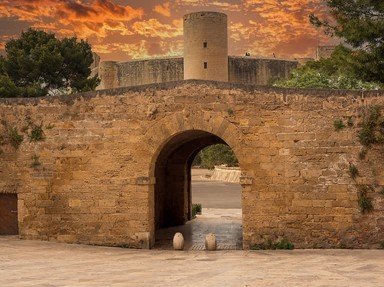Quiz Answer Key and Fun Facts
1. The promotional trip starts in China. One of the most famous walls in the world is found here, the Great Wall of China. What is one of the very persistent myths surrounding this wall?
2. Next stop on the journey is a country in the southern part of Africa. Here the tennis players find the ruins of a former capital city of one of the kingdoms in Africa. The complex is known for its great walls. In which modern day African country with its capital of Harare is the next stop on the promotion tour?
3. For the third leg of the journey, our tennis players find themselves visiting a walled complex near the city of Cusco in Peru. What is the name of the former Incan complex?
4. Part four of the trip takes our team to the United States. In Seattle they will practice their shots near the Market Theater Wall. This brick wall is covered with a special substance. What substance is this?
5. Part five of the trip takes the team to Europe, to England to be more precise. Here they find the remains of an old Roman wall in the north, called Hadrian's Wall. The wall was supposedly built to keep out tribes from an adjacent country. Which country is this?
6. The next stop on the tour is Berlin, Germany. Between the years of 1961 and 1989 the Berlin Wall separated the western and eastern parts of the city. Not much remains of the wall as it once was. One of the remaining parts of the wall is now covered in paintings. What is the name of this section of the former wall?
7. For the seventh part of their trip, the players find themselves in one of the countries that once belonged to Yugoslavia. Here they visit the Walls of Ston. In which country are these walls located?
8. Part eight of the trip takes the team to Turkey, where the famous ruins of the city of Troy can be found. Some of the walls of the city can still be found here. Which German archeologist was one of the early archeologists to work on uncovering the ruins of Troy?
9. The trip of our team is nearly complete. For the ninth part of their journey they visit the Western Wall in the capital of Israel, Jerusalem. Under what name is this wall also known?
10. The last leg of the trip takes the team to Iraq. Here they find the remains of the Walls of Babylon. One of the parts of these walls used to be the Ishtar Gate. At which museum can you find a famous replica of this historical gate?
Source: Author
James25
This quiz was reviewed by FunTrivia editor
stedman before going online.
Any errors found in FunTrivia content are routinely corrected through our feedback system.
